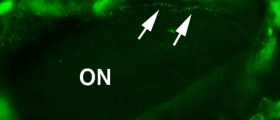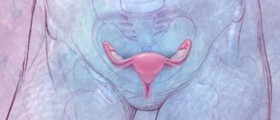
Definition of Ovarian Hyperstimulation Syndrome (OHSS)
Ovarian hyperstimulation syndrome is a condition induced by fertility medications. A hormone called human chrionic gonadotropin (hCG) is used as a treatment option for infertility, and its primary purpose is to provoke ovarian performance. When the dose of the human Chorionic gonadotropin is too high or if the procedure is successful and a patient gets pregnant the probability that she will develop OHSS is all the more significant. There is a hormone variant called GnRH that can be used as a substitute for hCG as it decreases the possibility for developing the ovarian hyperstimulation syndrome, but its success rate in treating infertility is slightly lower. The ovarian hyperstimulation syndrome is essentially characterized by an unusual number of cysts in the ovaries which ultimately cause the increase in their size. Another feature of the disorder is fluid accumulation in the abdomen and the lungs which in turn leads to kidney, breathing, and circulation problems. In addition, the OHSS affects about 5 percent of women who are undergoing fertility treatments, and those who are young, have high level of estrogen in the blood, use hCG as an ovarian inducer, and produce an abundance of follicles in a cycle are more prone to developing the syndrome than the rest of the population. The risk of developing the OHSS can be decreased if the IVF is performed without the hCG, or supplemented with GnRH.
Symptoms of Ovarian Hyperstimulation Syndrome
When it comes to the symptoms of the ovarian hyperstimulation syndrome, they range from mild to moderate, and finally to severe. The mild symptoms include bloating in the abdomen, nausea, loose bowel, and a weight gain of 3 to 5 kilograms in just as many days. The moderate symptoms include most of the mild ones, but involve an increase in the effect. Moderate symptoms are an immense weight gain, stronger abdominal pain, loose bowel, vomiting, and darker urine as well as its decrease in the quantity. Evidently, in addition to the mild and moderate problems, the severe symptoms consist of bloating, difficulties in breathing, very dark urine if any is present at all, abdominal pain, and a weight gain of more than 5 kilograms in 3 to 5 days.
Classification and Complications of OHSS
When it comes to the mild occurrences of the OHSS, the ovaries increase in size to about 6 to 12 cm coupled with the previously mentioned symptoms. The more severe forms are characterized by thrombosis, urine arrest, as well as lung and breathing difficulties as there is excess fluid in the lung area. The cases that are considered mild usually develop before conception while the severe incidences surface during pregnancy. The ovarian hyperstimulation can lead to the bursting of the ovaries, which can be particularly dangerous if not attended to in a timely manner as it leads to internal bleeding. Other possible obstacles include kidney failure, blood clotting, and various other ovarian problems. On average, the symptoms of the OHSS last from a couple of weeks to three months, and can change in severity from time to time. Death caused by the complications from the ovarian hyperstimulation syndrome is infrequent, but cases have been reported.
Treatment options
Depending on the severity of the symptoms, there are many ways in which the OHSS is treated. When it comes to the mild OHSS, the problems are usually monitored by medical care professionals until they go away or until they worsen. In cases when the symptoms escalate from mild to moderate laying in bed and drinking lots of fluids often helps, but at the same time blood count is observed periodically. In many instances a medical care provider will ask for an ultrasound to monitor the size of the follicles and subsequently of the ovaries themselves. Once the size of the ovaries is back to normal the condition is considered resolved. Many health care workers will advise the patient to drink plenty of fluids to accelerate the recovery process, which amounts to over 10 glasses a day. Frequent urination is also advised until the colour of the urine goes back to normal. Beverages that are to be avoided are those that contain caffeine, such as tea and coffee, as well as alcohol as they will only prolong the symptoms. Further, a patient might have to be hospitalized and undergo the removal of the excess fluid from the abdominal or lung areas, and she might require painkillers as well. In general, after a certain period of time and under careful observation, the condition usually goes away naturally, and the ovaries return to normal. It should be noted that patients are supposed to monitor the changes as well as report them to the physicians. If there is a substantial weight gain or urination is still infrequent despite following a doctor’s advice, the patient should definitely consult with the primary medical care provider and perhaps modify the course of treatment.

















Your thoughts on this
Loading...